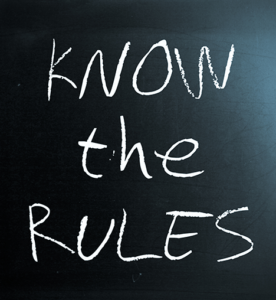
Why people don’t always follow the rules (and how to fix it)
 Relying on rules to influence safe behaviour isn’t necessarily a bad thing. After all, people need to know how to behave in certain situations. Rules provide clarity and consistency; they act as simple reminders and in case of misdemeanours they help you pursue a fair and uniform approach to discipline.
Relying on rules to influence safe behaviour isn’t necessarily a bad thing. After all, people need to know how to behave in certain situations. Rules provide clarity and consistency; they act as simple reminders and in case of misdemeanours they help you pursue a fair and uniform approach to discipline.
Yet as you’ll probably know people don’t always follow the rules. So let’s understand why that happens and how to improve the situation.
If we put too much emphasis on rules and the disciplinary consequences of not following them, most of the time they will be followed. Yet people only choose correct behaviour in this instance because ultimately they don’t want to get in trouble.
Now, if an individual doesn’t think they’ll get into trouble (because they don’t think they’ll get caught) they’re highly likely to revert to their own choice of behaviour. Think of your own driving behaviour when you know there are no police or speed cameras on a stretch of open road!
The ideal situation is when people choose the correct behaviour (and comply with the rules) because they believe it’s the right thing to do. They recognise the more painful, potential consequences which could occur to themselves and others if they choose the alternative, unsafe options.
You’ll find this type of behaviour at the heart of every strong safety culture and is underpinned by ‘Nudge Theory’.
What you can do to make that happen: The role of Leaders
Leadership (directors, heads, managers and ssupervisors) have a crucial part to play in how rules are interpreted and implemented by their teams. It isn’t enough to simply state the rules and then enforce them.
Instead leaders should explain the reasons behind the rules so that the true value of the rule is understood and teams buy into it. If a manager can’t explain why a rule is imposed then the rule itself should be challenged:
“Do we really need to wear the protective equipment in this location?” “Do we really need to restrict vehicles to a 5mph speed limit on this stretch of road?”
It’s essential to put energy into finding out and understanding what is happening within your organisation. If you don’t increase your understanding, you will never be able to change the situation and people will continue to break rules.
A culture assessment is an excellent way to do this.
It can be a challenge to gain your Senior Leadership’s buy-in to exploring – and ultimately changing – your company culture. However, it’s essential to gain their support early on in the process.
We have created this Engaging Senior Leaders Insight Guide based on over 30 years of working with organisations.
It can be a challenge to gain your Senior Leadership’s buy-in to exploring – and ultimately changing – your company culture. However, it’s essential to gain their support early on in the process and this free Engaging Senior Leaders Insight Guide contains advice to secure this.
Next Steps
About Nick Wharton
Lead Consultant
My role is to work with clients from many industries, in many countries, helping them to achieve the culture change they seek. I draw on my years of experience in enforcement, as an HSE Manager in industry and for many years as a Director of Tribe and its predecessor JOMC. During this time, I managed our excellent group of experienced and knowledgeable consultants, as well as overseeing the development of the many and varied new tools and approaches we use to help in getting the safety message across and achieving Culture Change.







